Leap
Perennials sleep, creep, and then leap. I’m not sure of the origin of this phrase. I tried to look it up on Google and found it described as an “adage” or a “saying,” but no insight into the brilliant gardener who came up with it. I know I originally heard it from my fearless, tireless, and courageous editor, Molly Glassman. The phrase itself implies that it takes three years for a perennial plant to become established, which might as well be forever for a Type A gardener. The sleep phase has to do with the plant getting adjusted to its environment and the roots beginning to get nutrients from the soil. Creep, as far as I can tell, is basically the same thing, except it takes that second year for the plant to become acclimated and established. It is the glorious third year that we all pine for, when the plant celebrates by creating beautiful flowers. Gardeners the world over congratulate themselves for the having the skill, fortitude, and yes, patience, to grow a thriving plant that will add years of color and joy to the garden.
Since I buy virtually all my plants from a nursery, I’ve always wondered how much of the sleep stage happens at the nursery as they manage the process of propagating plants from seeds and then moving the babies into pots that consumers, like me, buy hoping to avoid the seemingly unavoidable mortality rate that accompanies new plants. You would think if you purchased a plant that is already flowering, with roots happily spilling out the bottom of a plastic nursery pot, that the sleep stage should be behind you. So your gardening experience with perennials should begin with creep. If that were the case, the unbearable three-year wait for your plants to be safely established and happily blooming would only be two years. And while the thought of waiting two years still seems endless to me as a Type A gardener, it is at least imaginable. Three years is unacceptable.
At least it used to be unacceptable. Something strange is happening to me in this, my third year of trying to grow perennial plants. I am now firmly into the year when according to the sleep, creep, and leap schedule, my plants should be leaping. I don’t think there is a scientific instrument to measure this, but my guess is some of the plants are leaping, most are still creeping (I think), and a good percentage have died (worse than sleeping by a long shot). The strange thing is, I seem to have grown to accept this state of affairs with an alarming degree of calm. It’s positively un-Type A. I would like to think that after three years of garden adventures, some degree of wisdom is creeping into my assessment of plant activity. Or, more likely, it’s a defensive response to avoiding psychological pain. Either way, it’s better than obsessing over the growth cycle of so many different perennials.
With that in mind, I thought I would share some images of plants that I think are either leaping or in a very healthy state of creeping. I’ve written about these plants before, but this gives me an excuse to take some more pictures and marvel at how Mother Nature blesses us with gorgeous perennials. First up is yellow epimedium, a groundcover I planted under the dogwood tree in the waterfall bed. Clearly the winner in the groundcover contest with shale barrens sedum, which shares the space in front of the bed, epimedium is having itself quite a spring and I’m declaring it a leaper. I’m looking forward to when it fills the front of the bed so I can move the sedum and begin complaining about how the epimedium is completely out of control.
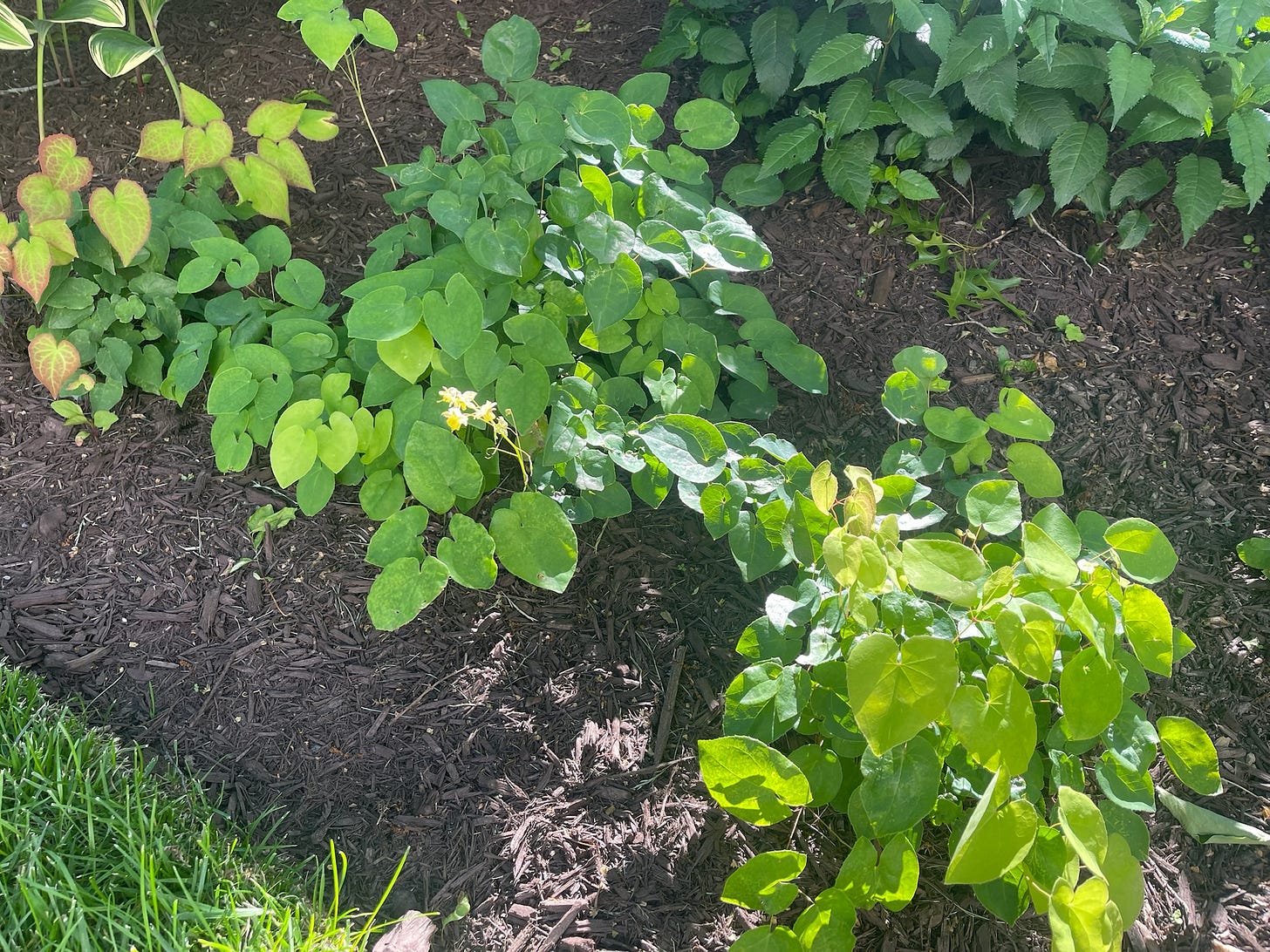
My next nominee for leaper is Autumn Joy sedum, previously eaten by birds and now enjoying a rebirth around the outside of the firepit bed. Two of the plants came from Home Depot, and the bird victims were purchased at Sun Nurseries. I can’t claim the nursery plants to be leaping since they aren’t as robust as they were before they became bird breakfast, but the Home Depot plants, located on the sun side of the firepit, seem to be having a great spring.
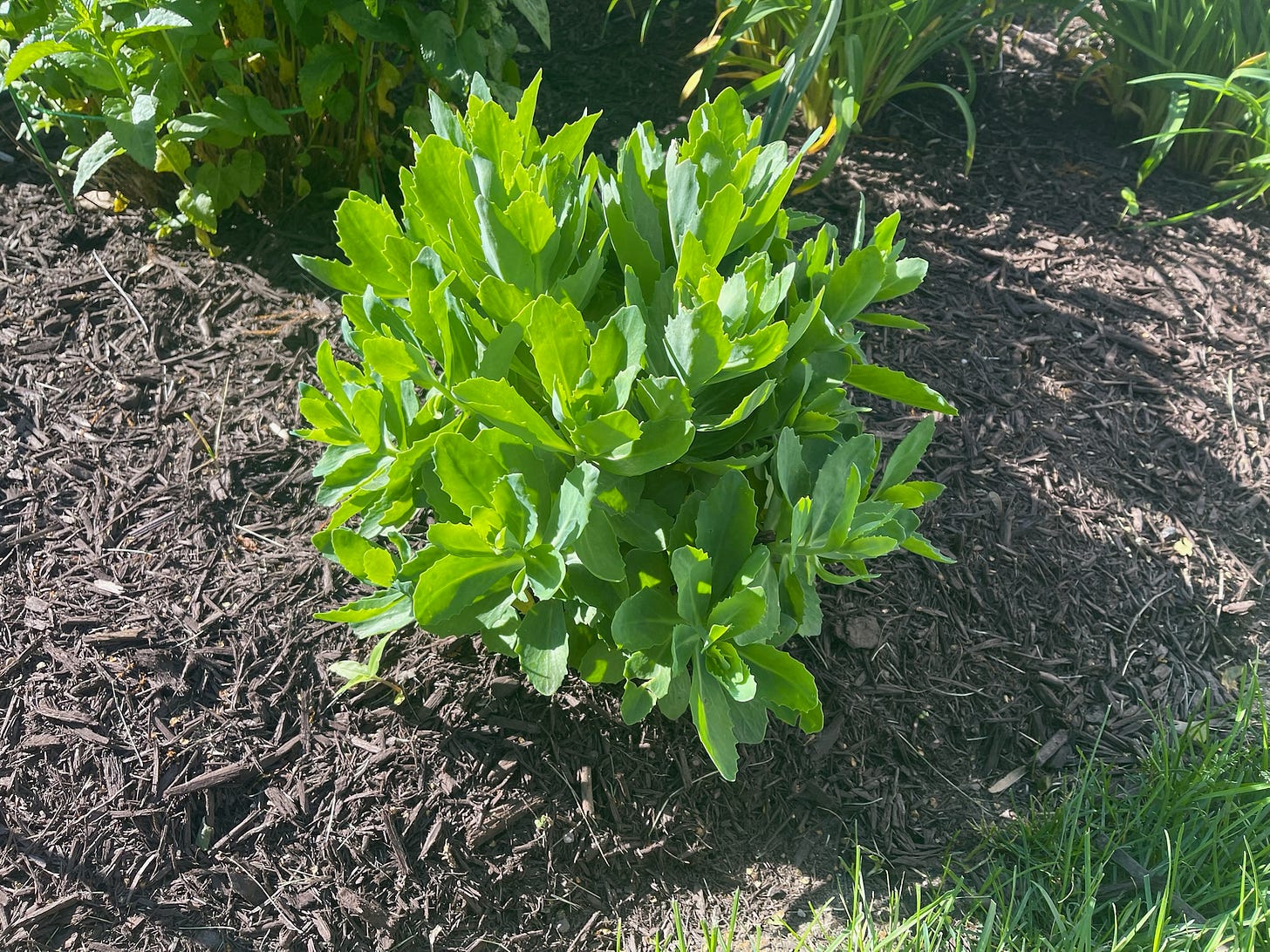
Another leaper is Japanese anemone, or windflower. Four of these plants were part of the original Sun Nurseries landscape design. Two of the four were so runty looking that after the first season, I asked for and was given a refund. I kept both plants, and now they have finished their sleeping and creeping cycle, at least to my eye. You really can’t tell a difference between any of the anemone this spring, and so I declare, with powers vested in me by absolutely no one, that anemone is a leaper. The fall flowers on anemone soar over the rest of the bed, perhaps a full 2 feet over the basal leaves shown here. As they sway in the wind you can see why they are called windflowers.
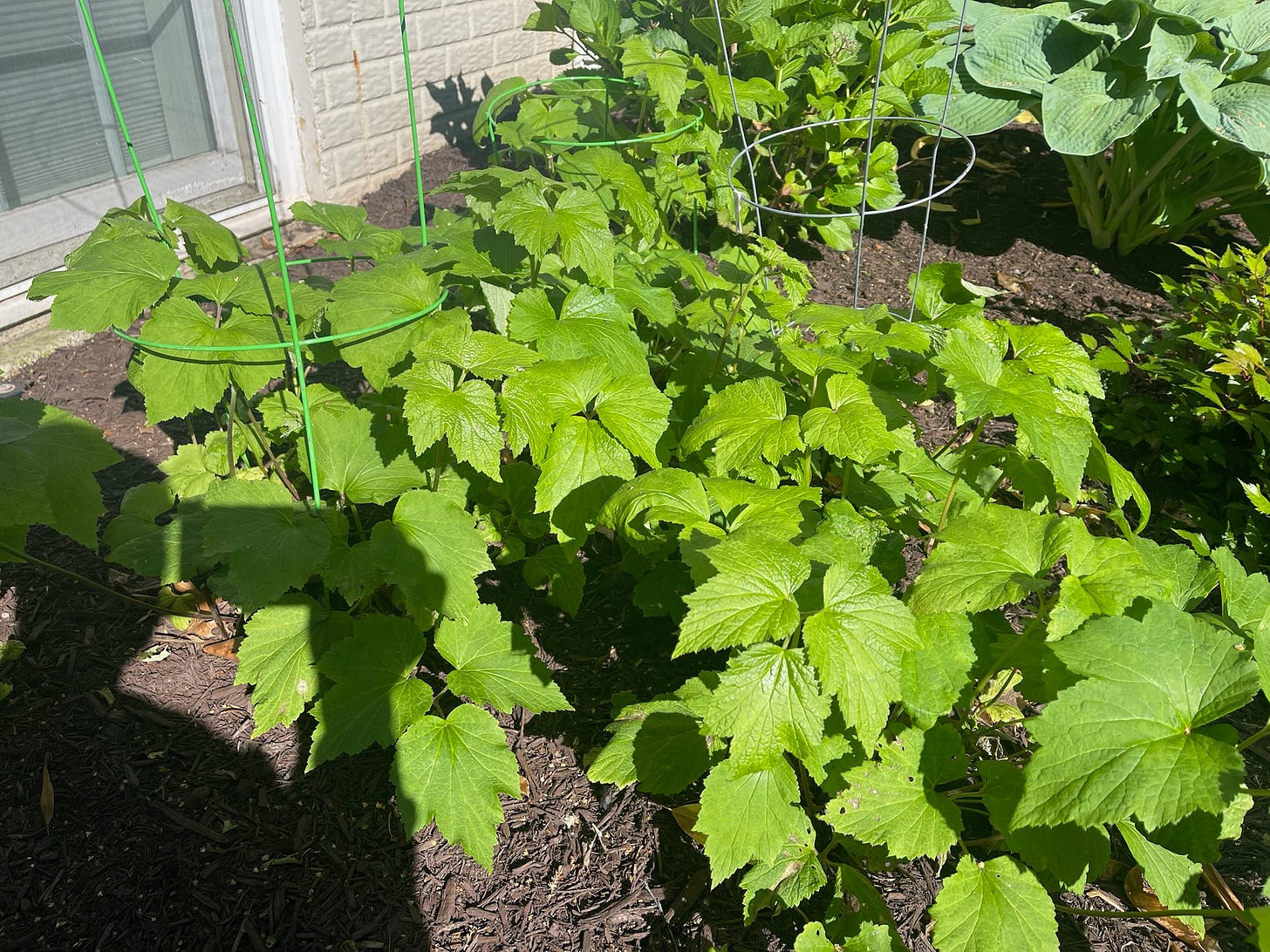
The last leaper in today’s post is a plant I keep writing about this season, mostly because I can’t take my eyes off it. I had no idea bleeding heart plants could get so big. If only they bloomed for a longer time. Mine blooms for about three weeks and then packs it in for the season. Then, somewhere in the middle of July or early August, it just disappears entirely. Nonetheless, if ever there was a plant that slept, crept, and then leapt, I would argue that this one fits the bill.
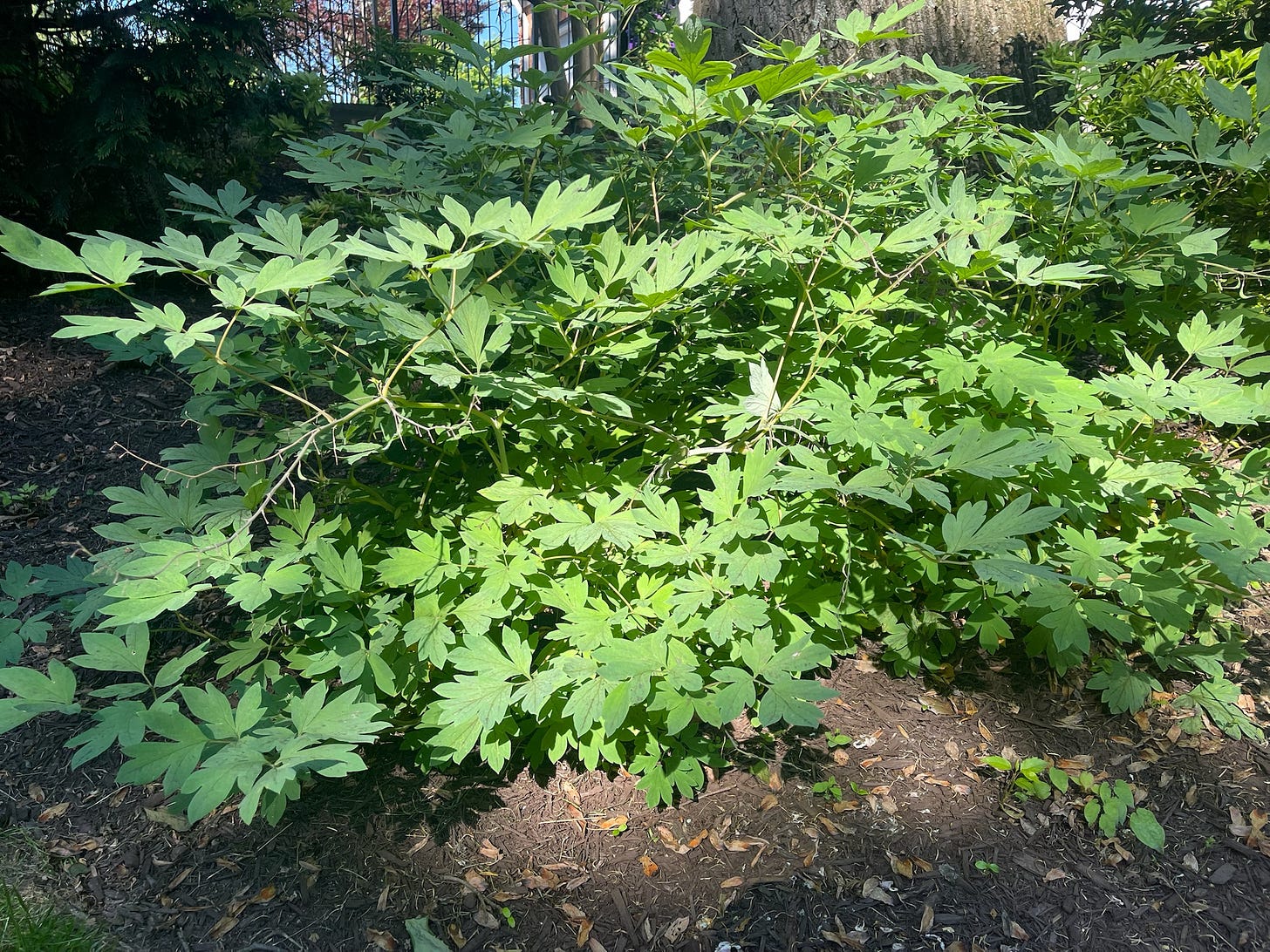
On an entirely different note, I want to share a story about tulips. No, not the bulbs that come up in the spring, but the flowers that come down from my tulip poplar tree. These must be the most beautiful bric-a-brac you could hope for, if you ever lose your mind and hope for such a thing. In a world of falling branches and ugly seed pods, the flowers from the tulip poplar are stunning.

Just so you don’t get overly poetic about the beauty of tulip poplar flowers, here’s what the steps looked like after the same heavy rain. Oh brother.
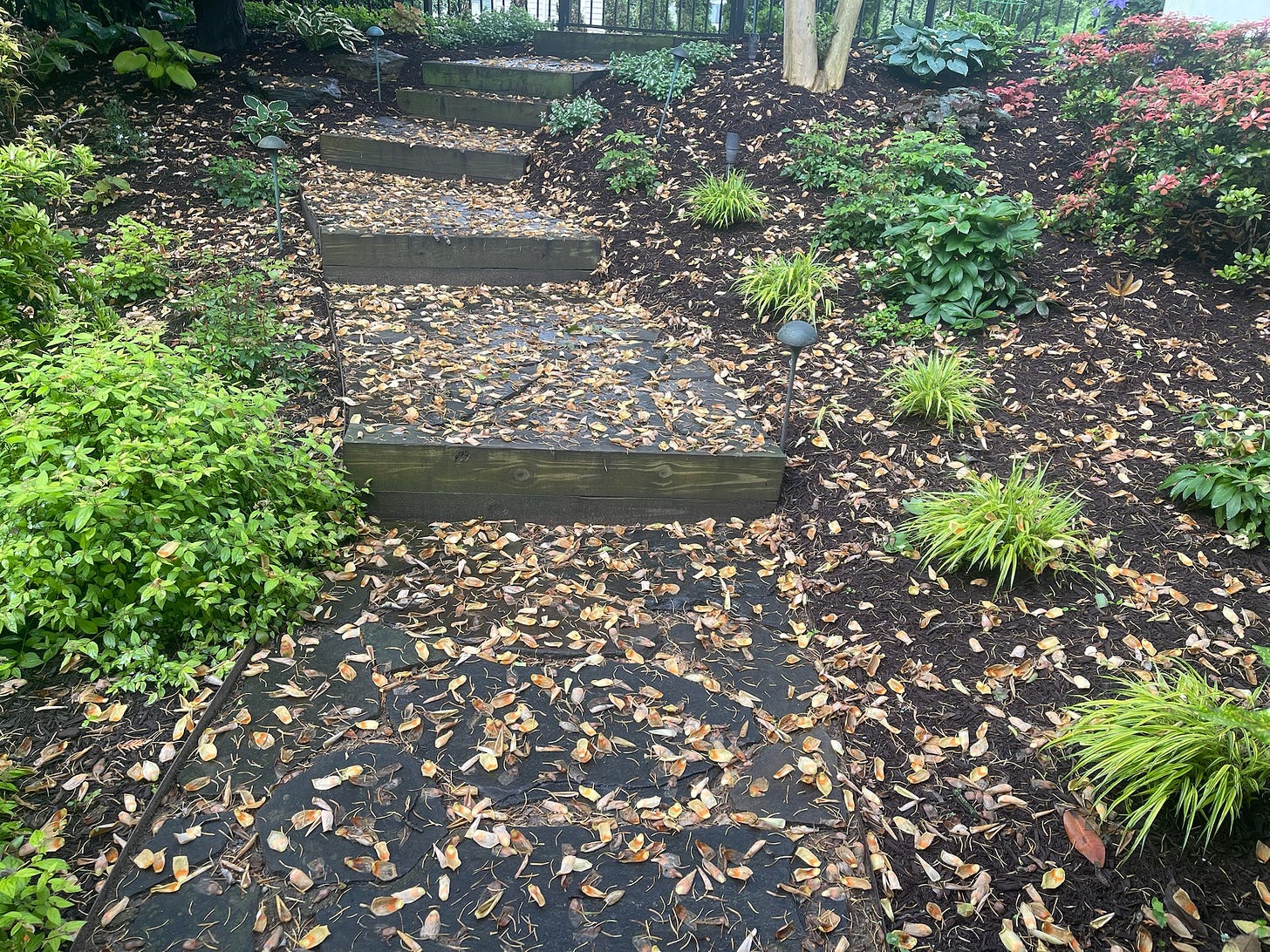
Time to wrap up this post. As always, thanks for reading The Painful Education of a Type A Gardener. You can get more outstanding, award-winning, highly forgettable, gardening content by clicking HERE. Thank you for your likes and comments. They are always appreciated. You can share this letter with friends and enemies by clicking on the SHARE button or emailing them a link to kensolow.substack.com.



